- drach09's home page
- Posts
- 2022
- 2020
- June (1)
- 2019
- 2018
- 2017
- 2016
- 2015
- 2014
- December (13)
- November (2)
- October (5)
- September (2)
- August (8)
- July (9)
- June (7)
- May (5)
- April (4)
- March (4)
- February (1)
- January (2)
- 2013
- December (2)
- November (8)
- October (5)
- September (12)
- August (5)
- July (2)
- June (3)
- May (4)
- April (8)
- March (10)
- February (9)
- January (11)
- 2012
- 2011
- October (1)
- My blog
- Post new blog entry
- All blogs
2006 EEMC Neutral Pions: Single-beam Backgrounds (part 8)
At the VU-ANL meeting it was suggested I examine the BBC efficiency as a function of zvertex, mass, η, and pT. Here, I examine the ratio of no-coincidence events to the total for the aforementioned variables. In general there are insufficient statistics to draw firm conclusions. As a useful reference, I refer people to Pibero's blog entry analyzing BBC efficiency as a function of jet pT and BBC-coincidence rate.
Figure 1
.png)
In Fig. 1, I show the dependence of BBC inefficiency on zvertex. Here, I take the ratio of no-BBC events to total events. I have fit the resulting distribution with a constant, and the results are perfectly reasonable (too good?). The inefficiency returns around 20%.
Figure 2
.png)
In Fig. 2, I plot to BBC inefficiency as a function of di-photon invariant mass. Again, the distribution is fairly constant around 21%.
Figure 3
| 0 < mγγ < 0.6 GeV/c2 | 0.1 < mγγ < 0.2 GeV/c2 |
|---|---|
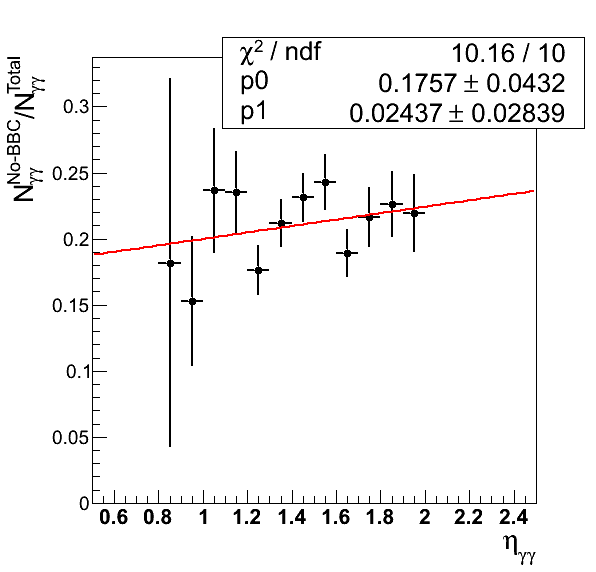 |
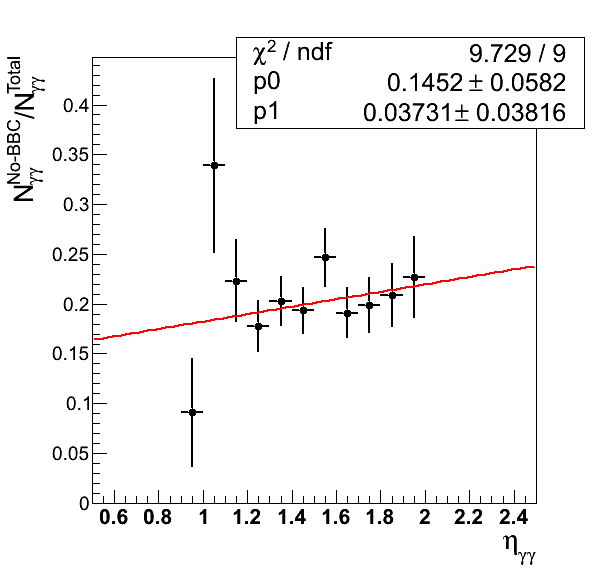 |
In Fig. 3 I plot the BBC inefficiency as a function of di-photon pseudorapidity and fit the resulting distribution with a linear function. On the left, I plot the wide range of mass; and on the right I plot the signal peak region. While not statistically signficiant, the result is fairly suggestive of a linear dependence. The intercept is, of course, perfectly consistent with the ~20% we have seen so far. I point out, however, it is also statistically consistent with the 12-14% observed at midrapidity.
Figure 4
| 0 < mγγ < 0.6 GeV/c2 | 0.1 < mγγ < 0.2 GeV/c2 |
|---|---|
.png) |
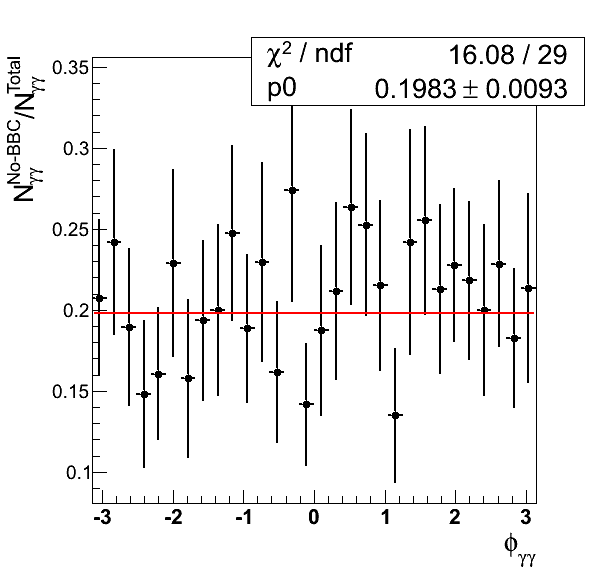 |
In Fig. 4, I plot the azimuthal dependence of the BBC inefficiency. The results are perfectly consistent with a constant around 20%.
Figure 5
| 0 < mγγ < 0.6 GeV/c2 | 0.1 < mγγ < 0.2 GeV/c2 |
|---|---|
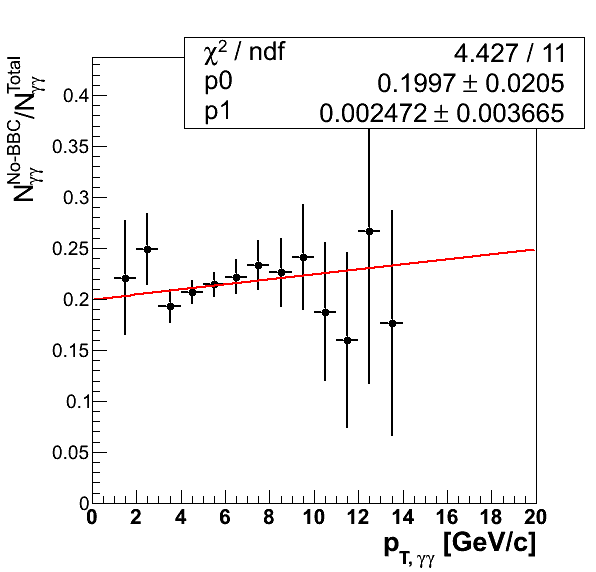 |
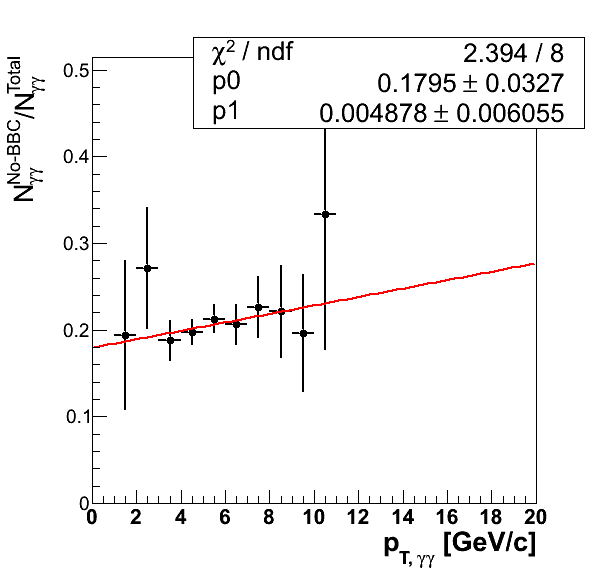 |
In Fig. 5 I plot the BBC inefficiency as a function of di-photon pT. Again, while not statistically significant, the results are suggestive of the kind of linear behavior observed with far greater precision on Pibero's blog. The intercept for the wider mass cut is 3.27σ (2.91σ) from the high (low) BBC-coincidence rate intercept, while the signal region is 1.43σ (1.21σ) from the high (low) rate. If I restrict myself to the range of 4-16 GeV/c, consistent with our intended publication range, I obtain perfectly consistent fits. If I restrict myself to the range of 3-10 GeV/c, where the bulk of the statistics lie, I return fits of (0.169479±0.0261392 GeV/c) + pT×(0.00795216±0.00472848 (GeV/c)-1) for the wide mass range and (0.171713±0.036103 GeV/c) + pT×(0.0060498±0.00663049 (GeV/c)-1) for the signal mass range. For these fits, the χ2 values are way, way too good. However, it is interesting that the fits are not unreasonably close to the extrapolated values from Pibero's study. I would naïvely expect the slopes from the pion study to be modified from Pibero's slopes by some factor on the order of 1/z, where z is the momentum fraction of the jet carried by the pion. Since the precision, here, is so poor it is not possible to extract a scale factor, however, I do not see anything that would rule out reasonable values of z.
- drach09's blog
- Login or register to post comments
